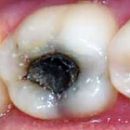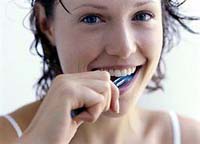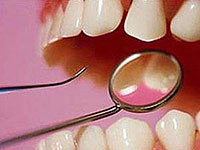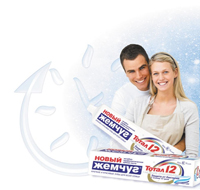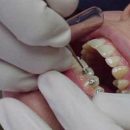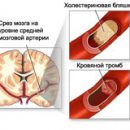Following these rules, you will save your teeth and gums healthy.
Content
Rule number 1. Brush teeth strictly after eating
The slogan of dentists sounds like this: «Root — Clean your teeth or at least rinse!» It makes sense to brush his teeth only after eating, at least after breakfast and before bedtime, but it can be more often. If you use a soft toothbrush and pasta without abrasive particles, the enamel will definitely damage.
In addition, at least once a day (best on the night) you need to use dental thread. Toothbrushes clean the working surface of the tooth, and the residues of food accumulate in interdental intervals, to which no one, even the most advanced and virtuoso toothbrush won't get. therefore 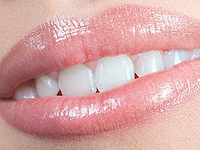 Do not be lazy.
Do not be lazy.
Another additional way to clean the teeth — Irrigator, special device with directional water, which will determine hard-to-reach places. But it is necessary to use it on the advice of a doctor, because if the enamel is damaged, such a procedure causes an unpleasant feeling. Instead of cleaning the teeth during the day you can use the rinser, it protects the enamel and makes breathing fresh.
Rule number 2. Choose a preventive toothpaste
Pastes are preventive and therapeutic. Many people think that therapeutic is better opposed to caries and periodontitis. This is wrong! Strictly speaking, therapeutic pastes can be used only by appointment of a doctor, and preventive needs every day. But even if you yourself made yourself a diagnosis and chose the healing paste, it is impossible to use it all the time.
The problem is that therapeutic and antiseptic components that are needed to combat periodontosis and bleeding gums inhibit useful bacteria in saliva, and if you use such pasta every day, your teeth can darken, a unpleasant bloom will appear, from which it will be difficult to get rid of.
Rule number 3. Learn to brush your teeth
As it is neither paradoxical, but most adult people do not know the teeth, dentists came to this conclusion. From here many problems. Dental enamel consists of prisms, in structure it resembles a fishcourse. If you brush your teeth as you browse the fish, t.E. against the growth of scales, from enamel after a while nothing will remain.
So teeth, unlike fish, need to iron. Movements should be redeemed only from gums. For upper teeth — top down, and for the lower — upwards. Otherwise, you risk driving a soft panel under the gum, and only the dentist can clean it from there, the gums will inflame, the root of the tooth will be exposed - and here are the first signs of periodontitis and the so-called peanant caries, t.E. Damage to the front of the front of the tooth at the gum itself. In this place it is easiest to damage.
Rule number 4. Healthy food
If you clean your teeth correctly, you can eat sweet. And with lollipops and lemonade, you need to be careful because  They contain preservatives and food dyes. It is these substances that create an acidic environment that destroys the enamel of the teeth. This is another argument in favor of eating smaller preservatives and more natural products.
They contain preservatives and food dyes. It is these substances that create an acidic environment that destroys the enamel of the teeth. This is another argument in favor of eating smaller preservatives and more natural products.
Rule number 5. Do not abuse fruit
Everyone knows that fruits and berries are useful. But there is one «but»: They contain fruit acids, and if the enamel of the teeth is weak or damaged (for example, you used too rigid brush or bleaching pasta with abrasive particles), fruits can cause further destruction of enamel and caries.
Rule number 6. Regularly go to the dentist
Standard preventive inspection must be held every six months. But if you already have more than 10 seals or diagnosed «Perdontitis», then to the dentist better to visit every 3–4 months. Since only it can diagnose, in what state of the gum and there is a small cavity under the already existing seal, which will destroy the tooth in the future. And advises how to avoid caries.
Rule number 7. Clean the teeth in the clinic
Professional clearance available in many dental centers. Such a cleaning is carried out on special devices with ultrasound and water. Her task — Remove the dental flare from hard-to-reach places and thereby prevent caries and gum disease. Do the procedure once every six months.
So, given the risk factors and correctly causing the oral cavity and teeth, you know how to avoid caries and periodontitis.

